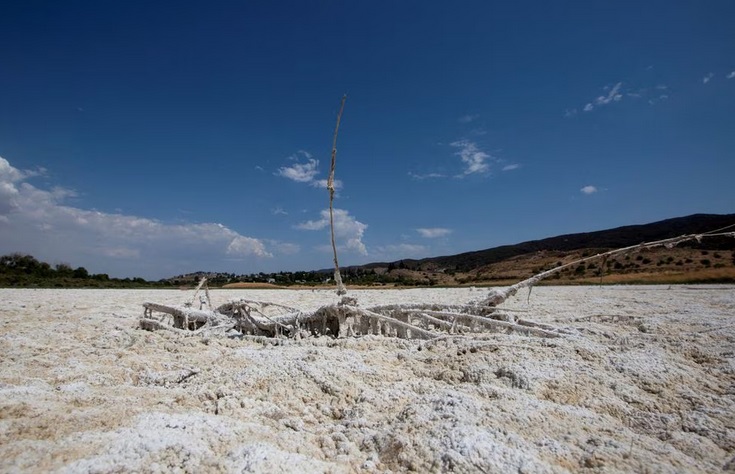This is according to a study published on May 18. The international team of researchers assessed that some of the world's most important freshwater sources - from the Caspian Sea between Europe and Asia to South America's Lake Titicaca - have been losing water at a cumulative rate of about 22 gigatonnes per year for nearly three decades. That's 17 times the volume of Lake Mead, the largest reservoir in the United States.
Photo of Elizabeth Lake in California (USA) in June 2021. Photo: Reuters
Researchers found that unsustainable human use, changes in rainfall, runoff, sedimentation, and rising temperatures have caused lake levels to decline globally. Experts concluded that 53% of lakes experienced a decline in water volume between 1992 and 2020. Nearly 2 billion people are directly affected, and many regions have faced water shortages in recent years.
Fangfang Yao, a hydrologist at the University of Virginia, who led the study published in the journal Science, said that 56% of the decline in natural lakes was due to global warming and human consumption. However, global warming was "a much larger contributor."
Climate scientists often assume that dry regions of the world will become drier due to climate change and wet regions will become wetter. However, research shows significant water loss even in wet regions. “This should not be taken lightly,” Yao said.
Scientists have long warned that global warming must be kept below 1.5 degrees Celsius to avoid the most catastrophic consequences of climate change. The world is currently warming at a rate of about 1.1 degrees Celsius.
The study, published on May 18, found that unsustainable human use has affected the amount of water in lakes. Meanwhile, lakes in Afghanistan, Egypt and Mongolia have been affected by rising temperatures, which could increase the amount of water lost to the atmosphere.
According to VNA/Tin Tuc Newspaper
Source link































































![[Maritime News] More than 80% of global container shipping capacity is in the hands of MSC and major shipping alliances](https://vphoto.vietnam.vn/thumb/402x226/vietnam/resource/IMAGE/2025/7/16/6b4d586c984b4cbf8c5680352b9eaeb0)






































Comment (0)